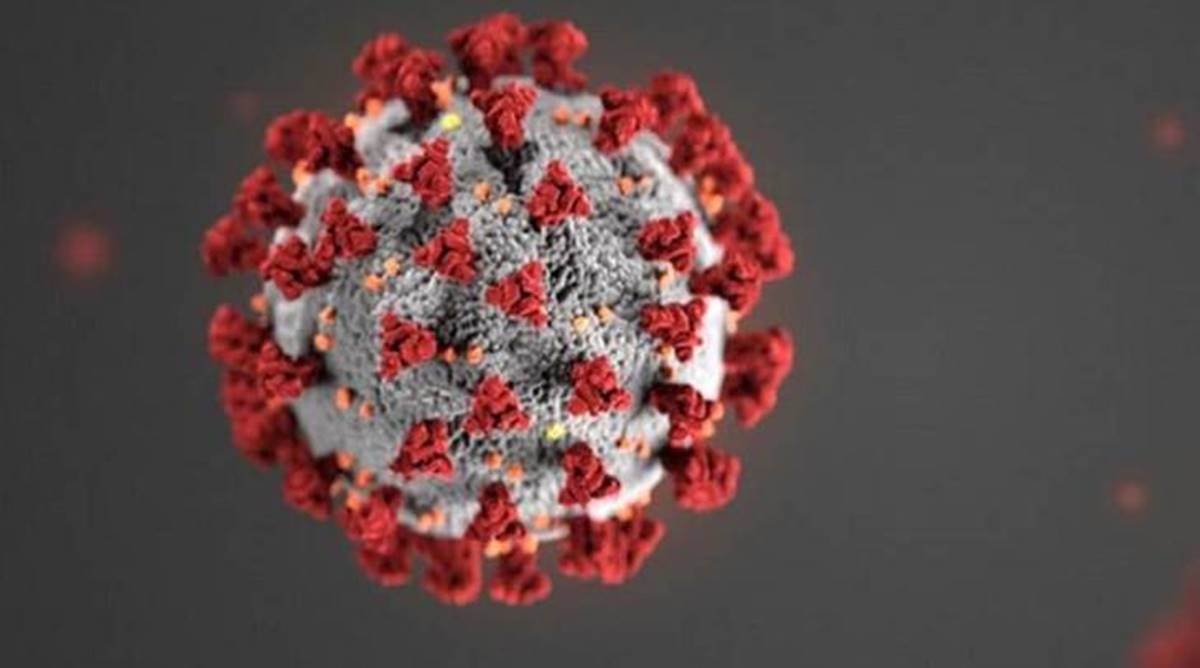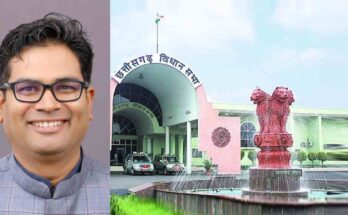Bengaluru: September 4, 2020. The science behind a device that claims to have the capability of killing coronavirus in closed spaces by using electron particles, produced by a serial inventor in Bengaluru, has been called into question by several senior scientists in the country.
Shycocan, a device created by Rajah Vijay Kumar, who runs a firm called Organization de Scalene, has received wide publicity over the past few months following claims of approval from FDA and EU-CE for its marketing in the US and Europe.
The official Twitter account of the US Consulate General in Chennai tweeted on August 29, congratulating Dr Rajah Vijay Kumar for developing a device “approved by @US_FDA to control the spread of #COVID19”.
Vijay Kumar and Organization de Scalene have claimed that Shycocan, which is a cannon-like device, produces electrons that travel across a room and kills the SARS Cov 2 virus when a super alloy in the device is activated with electricity from a powerpoint.
“Shycocan operates on regular 110/240V-50/60 Hz wall socket and is a plug and play device that delivers the necessary signals to photon-mediated electron emitters (PMEE), that produces hypercharge high-velocity electrons by photon mediation that interacts with the negative seeking S-protein of Corona family of viruses. It thus reduces infectivity and prevents air and surface borne transmission of the corona family of viruses,” Vijay Kumar has claimed.
“Everybody is preparing for it to be put into the market. After we developed it, we gave licences for its manufacture and marketing. It should be available from the first week of September. The price is fixed at Rs 19,999 for the entire country,” Vijay Kumar said in a chat.
“This machine was originally developed in December 2018. It was meant for reducing absenteeism in our campus due to the flu and common cold. When Covid happened in January 2020, we thought why not try this on that also – because Covid and flu are from the same family of viruses,” said the serial inventor who claims to be “a doctor of science in medical engineering (magna cum laude)”.
“The machine just releases photons like it comes from the sun and these photons strike surfaces to produce electrons and these cling to the spike protein of the virus,” he said.
Meanwhile, several top Indian scientists have expressed shock at the claims made about the device by its inventor.
“There is no scientific evidence for any of the things that they have claimed. Many of the points they have stated are absolutely wrong in terms of physics. They say they fill the air with electrons. This is a very childish and physically incorrect concept because physically electrons cannot survive in air and they get absorbed by other atoms and molecules quickly. In our lab when we do experiments with electrons we have to do it in vacuum,” said Umesh Kadhane, professor and head of the physics department, at the Indian Institute of Space Science and Technology (IIST) in Thiruvananthapuram.
“It is being marketed already. Actually it is a dangerous thing to do unless it is validated because people will get a false sense of security and people will become careless and think that this device will protect them. Their claim that it will only kill coronavirus is absolutely bogus because electrons do not distinguish between viruses and bacteria, and they simply attack surfaces. There are many flaws in their explanation,” said Dr Kadhane, who works in the specific area of atomic and molecular physics.
According to professor Arindam Ghosh from the physics department at the Indian Institute of Science (IISC) in Bengaluru, the claims of the Shycocan device being a coronavirus killer is unsubstantiated by any scientific document.
“The claim is that if you fire a lot of electrons, it affects and deactivates the S protein of the coronavirus. I do not know of any scientific document which proves this. To my understanding, there is no data available even outside the publication domain which proves it,” said Dr Ghosh. “I do not understand what charged photons are or even how some weird electrons seek only the coronavirus to kill leaving everything else unaffected.’ .
“I do not think that you need anything more than 12th standard level basic science to ask some very serious questions about this. The first thing is that these guys have not given any data about this device. There is zero data available about what the device is and how do you get these energetic electrons,” said Arnab Bhattacharya, professor at the department of condensed matter physics and materials science at the Tata Institute of Fundamental Research (TIFR) in Mumbai.
“They claim to be using UV light. UV light has a maximum energy of a photon of light of, let us say, two or five electron volts. How do you shine five electron volts on something and get 1.5 million volt electrons? This beats me. Unless you show me the data and how it works I cannot believe you,” said Dr Bhattacharya, the chair for TIFR public outreach.
“Hypercharged electron”, “charged photon”—why hasn’t this person got a Nobel in physics yet?” a computational biologist at the Institute of Mathematical Sciences in Chennai, Rahul Siddharthan, asked on social media following reports about the Shycocan’s ability to kill the coronavirus.
The claims have received so much publicity that web publications linked to the IISc and the Centre for Scientific and Industrial Research have posted news articles with the claims of the inventor. The IISc pulled down a link to a news article from one of its affiliate sites after a scientist from the institute’s centre for nanoscience and engineering red flagged the claims.
“#Congratulations Dr. Rajah Vijay Kumar, Indian scientist & a native of #Bengaluru for developing Scalene Hypercharge Corona Canon (SHYCOCAN), a device approved by the @US_FDA to control the spread of #COVID19,” the official account of the US consulate general in Chennai said on August 29.
“Please do not mislead @USAndChennai! An Emergency Use Authorization (EUA) is not equivalent to FDA “approval”. This device does not have any publicly available data on the underlying science or its efficacy in controlling SARS-COV2,” professor Arnab Bhattacharya from TIFR had tweeted in response to the US consulate message.
The claims of the Shycocan device’s capabilities in countering the coronavirus in rooms has got much traction on account of an accompanying claim that it has received a clearance for marketing in the US from the Food and Drug Administration (FDA).
“It is under the Covid 19 health emergency. It is under what they call the enforcement discretion policy of the FDA. So FDA has notified this device and under that we are marketing it in the US as long as the emergency exists. It has undergone tests for five-six months and all documents had to be submitted to the FDA and then they notified it,” said Shycocan inventor Rajah Vijay Kumar.
An analysis of the US FDA’s ‘Enforcement Policy for Sterilizers, Disinfectant Devices, and Air Purifiers During the Coronavirus Disease 2019 (COVID-19) Public Health Emergency” – under which Shycocan claims to have got marketing clearances – along side a statement issued by the US collaborators of Vijay Kumar – a firm called Shreis Scalene Therapeutics LLC, shows the Shycocan device has no official FDA clearance that establishes the efficacy of the device.
The firm claims that the US FDA has said that “The Scalene Hypercharge Corona Canon may fall under one of the policies set forth in this guidance, and be distributed without compliance with certain regulatory requirements as outlined in the guidance,” as clearance for use to fight Covid 19.
According to the US FDA policy during the Covid 19 health emergency: “The FDA does not intend to object to the distribution and use of sterilizers, disinfectant devices, and air purifiers that are intended to be effective at killing the SARS-CoV-2 virus but do not already have FDA marketing authorization, without compliance with regulatory requirements where such devices do not create an undue risk in light of the public health emergency”.
Incidentally, the Shycocan does not show up on the FDA’s website for devices with a pre-marketing notification. “With Corona, there is an US FDA scheme for disinfectants that is not ingested. They (Scalene) have claimed approval under that scheme. Even if notified, the device must show up in the FDA database,” said a patent analyst who has worked with pharma and devices companies in India.
In the past, Kumar’s firm had claimed an FDA recognition for a controversial cancer cure device called Cytotron under the category of a breakthrough device.
“There is a program in the US FDA called breakthrough device where if your device fits a certain criteria it will be allowed to accelerate trials. These people claimed that the US FDA has given them a certificate that their device is a breakthrough device – which is fraudulent. It is very confusing and a lot of people have criticized the confusing name of this program of FDA,” the patent analyst said.
Vijay Kumar has also claimed that the ability of his device to kill 99.9 per cent of the coronavirus was certified by a laboratory in Mexico called Laboratories de Especialidades Immunological S.A. de C.V (LEI).
“These are biosecure labs – they have samples of the virus. We could not do it in India because we do not have labs that are free for this. We had to do it in America – these are special laboratories. A lab in Mexico did our tests. It is a biosafety lab and they have all these things,” Kumar said when asked how the device was tested on the coronavirus.
The inventor did not provide documents of the FDA clearance and the lab certifications for the efficacy of Shycocan – saying “the documents are very big and run into hundreds of pages” – but provided a reference to a white paper he had written to prove his claims.
“They say they have a white paper which is basically an advertisement at best, that rambles about the phylogenetic tree of SARS COV 2 more than anything related to their device. They reference a Sci Reports paper on influenza but I do not see the connection. Some basic googling will tell you that this seems to be a dubious company. I could not find any papers or even patents that would give a clue on what this gizmo does,” said the TIFR professor Arnab Bhattacharya.
“They have done similar stuff in the past – claimed that a device called “Cytotron” using quantum magnetic resonance can be helpful towards multiple sclerosis in 2010, regenerate tissue for osteoarthritis in 2015 and cure cancer in 2019. Their clinical trials results are unknown or withdrawn. It seems some hospitals were using their device and at least one had to return money to a consumer who complained,” Prof Bhattacharya said.
According to Vijay Kumar, at the core of the Shycocan device that will emit electrons to pulverise the coronavirus is a super alloy he developed and patented a few years ago.
“It is a super alloy and the whole technology is around that. The alloy was developed by us in the first place for another patent. Then we wanted to find an application for that and then the flu thing was interesting and we worked on that and so when corona came we took it seriously. The alloy was patented long ago,” Kumar claimed.
“This makes no sense without data and they have not released any data. To me it sounds like a lot of buzzwords with no data to back any of the claims,” said Prof Bhattacharya.
“The super alloy is a different thing altogether. What happens is that in order to produce a large quantity of electrons – what you call photon stimulated electron emission which is essentially the photoelectric effect – where you fire photons on these super alloys which produces a lot of electrons. Whether this large quantity of electrons actually affects the coronavirus and whether there is any scientifically proven article regarding this I am not aware,” said Prof Arindam Ghosh at IISc.
“They claim to be using a super alloy called scalene but there is no documentation and no technical information on such an alloy. Physically in my view whatever they are saying is not even possible but suppose I give them the benefit of doubt then there should be documentation other than newspaper articles,” said Prof Kadhane at the IIST




